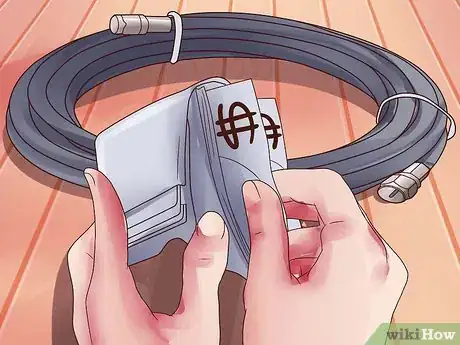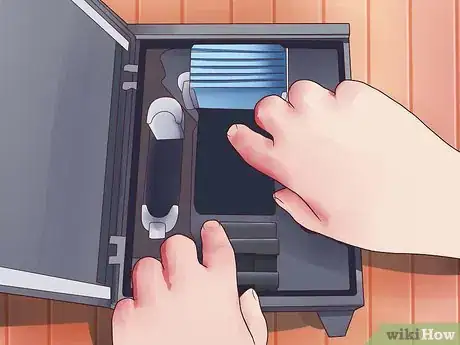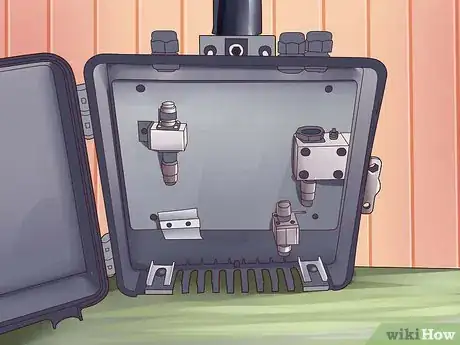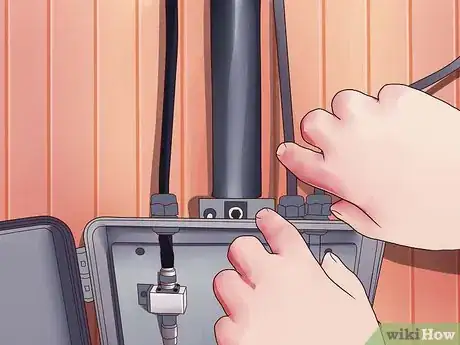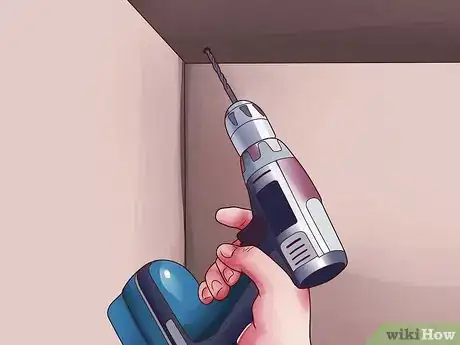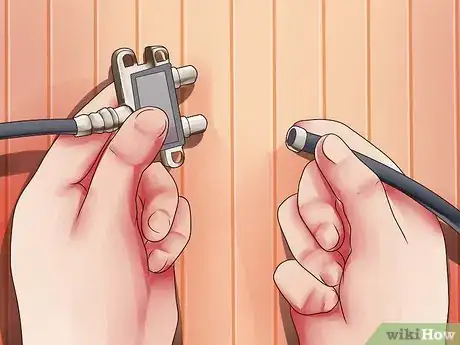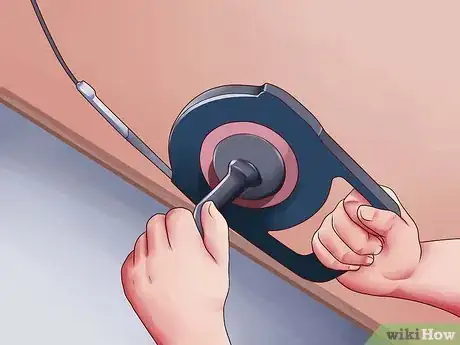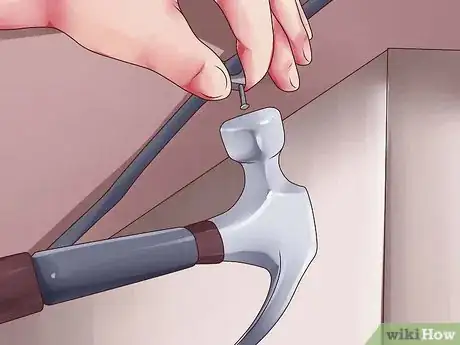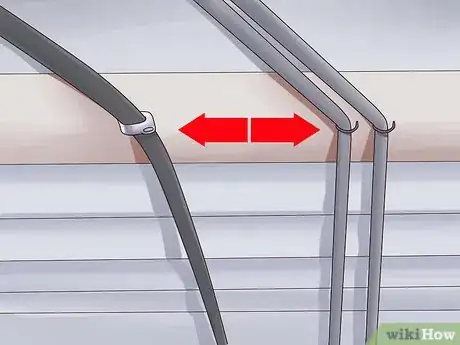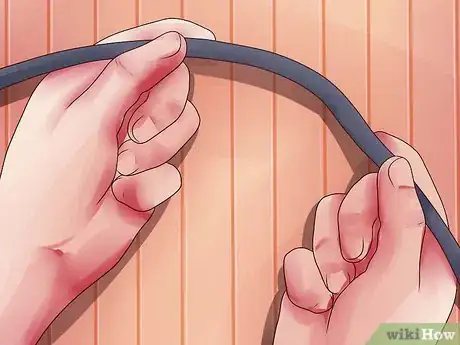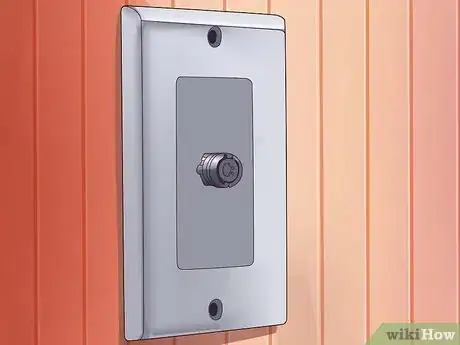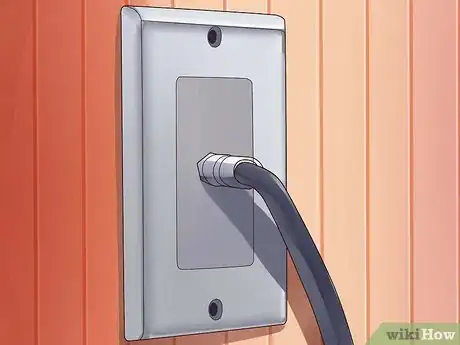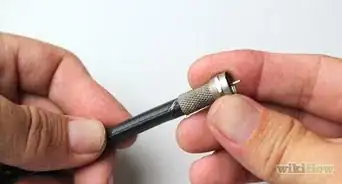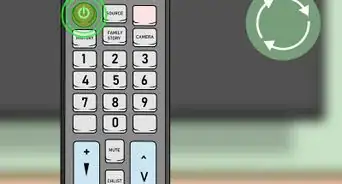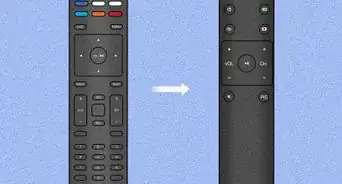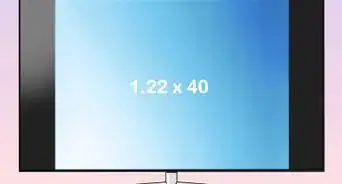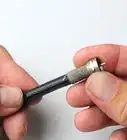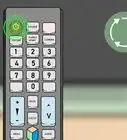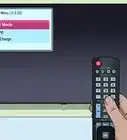X
wikiHow is a “wiki,” similar to Wikipedia, which means that many of our articles are co-written by multiple authors. To create this article, 15 people, some anonymous, worked to edit and improve it over time.
This article has been viewed 220,129 times.
Learn more...
Don't want to be subjected to the fees of professional cable installation? If you've got a free afternoon, you can run the cable yourself and save some money. Depending on how many different rooms you are wiring, you may only have to go through a few inches of wall. You can purchase everything you need to wire your own cable from your local hardware and electrical supply store.
Steps
Part 1
Part 1 of 2:
Running the Cable to the House
-
1Purchase the correct cable. RG6 is the standard for cable installation, can can be used both above- and below-ground. Make sure that you purchase about 10%-20% more than you think you'll need in case of unforeseen complications.
-
2Connect the coaxial cable to the drop. Connect a coaxial cable to the distribution point located either on the "pedestal", which emerges from the ground, or on an overhead utility cable at some point near the place where cable is to be installed.
- Note: It is illegal to connect cables to the distribution point without getting permission from the cable company.
Advertisement -
3Run the coaxial cable to the entry point of the house. Run the cable to the point the cable is to enter the subscriber's home or other. There are two different ways you can run this cable to the home:
- You can bury "flooded" coaxial cable from the buried distribution point or pedestal to the point at the subscriber's home or other structure where the cable will enter. When burying cable, you may want to run it through PVC piping to help prevent it from being accidentally cut by a shovel.
- You can run a special aerial cable with molded suspension wire from the distribution point on the overhead utility cable to a point on the eaves of the subscriber's home. Screw a hook into the eaves to which the far end of the molded suspension wire on the aerial coaxial cable can be looped and fastened.
-
4Set up the grounding box. Drive a grounding spike into the earth at or near the point where the coaxial cable enters the home or other structure, or locate a cold water pipe in the area. Fasten a 12-gauge grounding wire to the grounding spike or cold water pipe at one end and to a coaxial cable grounding block at the other. This will form a connection to the earth that will ground the coaxial shield in the cable and also serve to divert lightning strikes.
-
5Terminate the coaxial cable and hook it up to the grounding box. Use the coaxial cable stripping tool to remove the insulation in layers from the coaxial cable and the external woven wire "shield" of the cable. Place a connector on the end of the stripped cable and crimp or compress it.
- When terminating the cable, ensure that there are no loose wires poking out of the connector. This will lead to bad or no signal. Avoid using screw- or push-on connectors, as these can become loose very easily and lead to a bad connection.
- See this guide for more details on terminating coaxial cables.
- Fasten the coaxial cable from the distribution point/pedestal to one tap on the coaxial cable grounding block. Make sure that it is securely fastened.
-
6Prepare the cable to run inside. Fasten a coaxial cable to the other tap on the coaxial cable grounding block. This will be the cable that runs into the house. Make sure that it is long enough to reach the destination with one cable.
Advertisement
Part 2
Part 2 of 2:
Installing the Cable
-
1Drill a hole into the home. Choose an entry point that will allow you to run the cable with the least amount of stress. Entering into the garage, basement, or attic will allow you to run the cables easier without having to go through as many walls.[1]
- Make sure you seal the hole you drill after running the cable in.
- Ideally, you'd want to run your cable through the attic, garage, or basement until you reach a point where you can go straight up or down through the wall to reach your desired outlet location.
-
2Install a splitter to send the signal to multiple destinations. If you need cable jacks in multiple rooms, you can use a splitter to attach multiple cables inside the home. Every time you split the cable, the signal gets weaker, so avoid splitting too many times.
- The splitter should be installed inside, preferably at the point where the cable enters the structure.
- If you are splitting to more than two locations, you will likely need to install an in-line amplifier. This will boost the signal, allowing you to split to more locations without losing signal quality
- For cable TV, buy a splitter rated at 5-1450 MHz.
-
3Use fish tape to run cables through walls. Fish tape allows you to easily pull wire through walls without having to tear the whole thing open. You can find fish tape at most hardware and electric supply stores.
- Do not allow the cable to become bent or crimped, as this will cause signal degradation.
- Don't try to force the wire through the wall by pulling. Pulling can damage the cable, and most RG6 cable is only rated to 35 pounds of pressure.
-
4Fasten cables using cable staples. When stapling cable, do not staple at even intervals. When a cable is stapled, the foam jacket inside is slightly squished. This can cause some of the signal to reflect. If the staples are evenly spaced, this can lead to a double-image. Use as few staples as possible when running your cable, and try to use cable-specific staples if possible.
- Do not run cable underneath carpet that will be walked on. Stepping on the cable will lead to the squishing of the foam jacket, hurting signal strength. Only run cables where no one will step on them.
-
5Avoid running the coaxial cable too close to electrical wires. If the coax is too close to electrical wiring, you can get a lot of interference. Keep coaxial cables at least 6 inches away from any electrical wires. If you have to cross an electrical wiring, do so at a 90 degree angle.
- Avoid running cables near heating ducts as well. Too much heat can warp and damage the cables.
-
6When bending the cable, keep it gradual. Avoid bending the cable at right angles when going around corners. Try to keep a radius of 2 ½ inches (6.35 cm) for the bend to avoid any signal degradation.
-
7Use a low-voltage box to mount a wall jack. Avoid using a standard electrical box, as this will force you to bend the cable at a 90 degree angle. A low-voltage box doesn't have a large metal box protruding from the back, allowing you to gently curve the cable to the jack.[2]
- Make sure that you tighten all your connections with a wrench. Hand-tightening will lead to loose connections, which can cause problems down the road.
-
8Connect the cable box or modem to the newly installed jack. Follow the instructions for the piece of equipment to perform the initial configuration. See the guides below for detailed instructions on setting up common cable equipment.
- Install a modem
- Install a cable box
- You can use an RF signal meter to ensure that enough signal is being transmitted through the cable.
Advertisement
Community Q&A
-
QuestionAre cable and internet on same line?
 Community AnswerCable TV and cable internet work on the same cable, you just need to use a splitter to connect one cable to the set-top box and one on a cable modem.
Community AnswerCable TV and cable internet work on the same cable, you just need to use a splitter to connect one cable to the set-top box and one on a cable modem. -
QuestionIs the cable suppose to run over the doorway or under the doorway?
 Community AnswerEither way can be done, but usually over the doorway avoids more problems with cable placement. The exception is where there's a recess under the doorway in which the cable can be placed securely with staples or hail clips so that no one trips over it. If you can do things this way, you avoid the temptation to make sharp 90-degree bends to make the cable fit unobtrusively around the door frame, which is always a bad idea.
Community AnswerEither way can be done, but usually over the doorway avoids more problems with cable placement. The exception is where there's a recess under the doorway in which the cable can be placed securely with staples or hail clips so that no one trips over it. If you can do things this way, you avoid the temptation to make sharp 90-degree bends to make the cable fit unobtrusively around the door frame, which is always a bad idea. -
QuestionDo I need to run separate cable throughout the house if I use two different companies, one for internet and one for cable TV?
 Community AnswerYes. Different companies have different transmission rates and are not normally compatible.
Community AnswerYes. Different companies have different transmission rates and are not normally compatible.
Advertisement
Warnings
- Connecting coaxial cable to your video equipment through a surge suppressor equipped to protect video equipment from voltage and current surges is an excellent idea to protect you, your video equipment and your home.⧼thumbs_response⧽
- Older televisions and other video gear may have defects or component wear that allow dangerous voltages and currents to exist on either the outer or inner conductor of the coaxial cable. Be careful in handling any coaxial cable connected to an older television, video recorder, cable tuner or other video equipment when the cable is not connected to or through a grounding block or surge suppressor⧼thumbs_response⧽
- Unauthorized installation of cable television from the cable television company's facilities is theft of services and punishable by law. This article is provided for educational purposes only and not intended to promote illegal activities, but to acquaint readers with how these tasks are done.⧼thumbs_response⧽
Advertisement
References
About This Article
Advertisement
